Exploring Hydrofoil Board Kits: A Comprehensive Guide
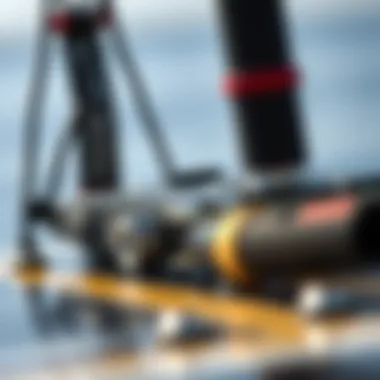
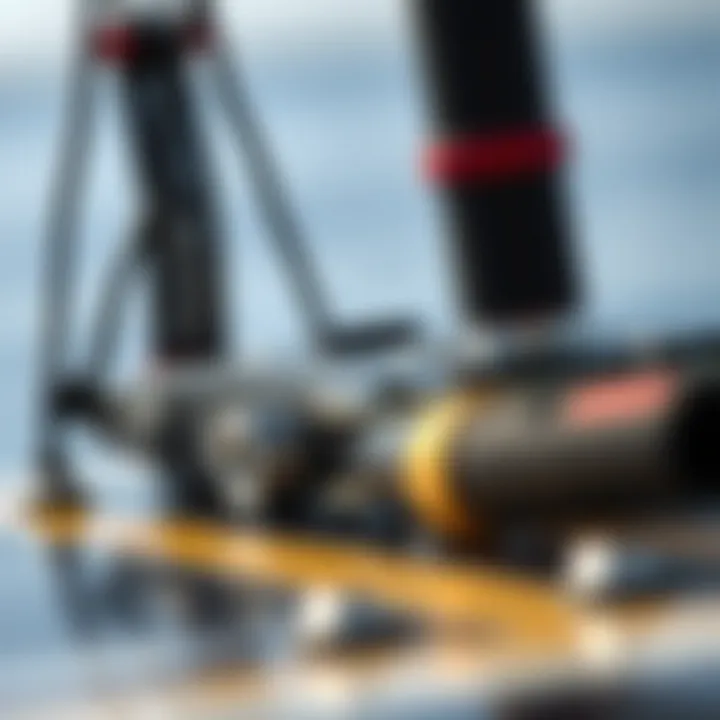
Intro
Hydrofoil boarding is like finding a hidden gem in the vast world of kiteboarding. For many, it brings a unique thrill, dancing over the water’s surface with ease. The kit you choose can make all the difference in your experience. So, whether you are just starting out or have been carving through waves for years, it's crucial to understand not just how to ride but what enables this exhilarating experience. The assortment of components that make up hydrofoil board kits can seem overwhelming at first, but once you break it down, it becomes simpler.
This guide takes a closer look at hydrofoil board kits: their essential parts, their impact on your riding experience, tips for maintenance, and even some safety measures. By diving into this subject, we hope to help you find clarity in your choices and elevate your connection to the sport. Let's roll up our sleeves and get into the nitty-gritty.
Gear and Equipment
Essential Kiteboarding Gear for Beginners
Starting on your hydrofoiling journey requires some foundational gear. While it might be tempting to jump straight in, having the right equipment can help you progress faster and enjoy the ride more.
- Hydrofoil Board: This is your platform above water. Longer boards offer stability, while shorter ones give you agility. Choose according to your comfort level.
- Kite: Selecting the right kite can make or break your day on the water. Beginners may want to start with larger kites that help lift off more easily in less wind.
- Control Bar and Harness: This gear connects you to the kite. A comfortable harness is essential. After all, you don’t want it digging in when you’re swaying in the wind.
- Personal Flotation Device (PFD): Safety first! Whether you are a beginner or a pro, wearing a PFD is a smart move.
- Wetsuit: Depending on the climate, a wetsuit can keep you warm and protect you from the sun and any rogue jellyfish.
Advanced Equipment for Experienced Riders
If you're an old hand at kiteboarding, you know that evolution never stops. As you grow, so should your gear. Here’s what seasoned riders might look into:
- Refined Hydrofoil: Experienced riders often prefer foils with advanced engineering for better aerodynamics, leading to increased speed and smoother rides.
- Performance Kites: Kites designed for specific conditions, such as those with a focus on speed or agility, can enhance your ride dramatically. An experienced rider knows which kite fits the style for the day.
- Custom Control Bars: Opt for bars that can be fine-tuned to cater to your personal preferences. Adjustable settings can provide responsiveness and comfort.
- Safety Gear: As you push boundaries, gear like helmets and impact vests becomes more crucial.
Techniques and Tips
Basic Riding Techniques for Newbies
Learning to kiteboard on a hydrofoil can be daunting at first. Here are some foundational techniques:
- Body Positioning: Start by keeping your body centered over the board. Lean back slightly to generate lift, this helps keep you on the surface.
- Kite Control: Begin with the kite low in the wind window when starting to gain speed. This assists with stability and helps reduce falls.
- Balancing: Focus on keeping your knees slightly bent and using your core for balance. Practice makes perfect here!
Expert Tricks to Elevate Your Skills
Once you've got the basics down, you may want to step up your game. Consider these advanced techniques:
- Jibes and Tacks: Master this to control your direction without losing speed. Practice makes this maneuver more natural.
- Jumping: This can be exhilarating but takes practice. As you get confidence, try launching off small waves or chop.
- Tricks: Once you feel comfortable, try adding a few spins or grabs to impress friends.
"Hydrofoiling is not just a sport; it's an art. Each ride is a canvas, every trick an expression."
As you explore hydrofoil board kits, the information presented aims to enhance your kiteboarding experience, guiding you through your choices and helping you connect deeper with the sport. Remember, every piece of gear and every technique you learn brings you a step closer to mastering the art of hydrofoiling.
Foreword to Hydrofoil Board Kits
Hydrofoil board kits have surged in popularity among water sport enthusiasts, particularly kiteboarders seeking a new thrill on the water. Understanding these kits is crucial, as they represent a fascinating marriage of innovation and adventure. The essence of hydrofoiling transcends traditional kiteboarding; it transforms the surf experience, allowing riders to glide above the water surface with remarkable speed and maneuverability. This introduction serves as a foundational overview of hydrofoil board kits, outlining their critical components and the experiences they enable.
Defining Hydrofoil Boards
At their core, hydrofoil boards feature a distinctive design, which includes a submerged wing-like structure known as a foil. This foil lifts the board above the water when sufficient speed is reached, dramatically reducing drag. By elevating the rider out of the water, the experience becomes smoother and faster, akin to flying just above the surface.
Hydrofoil boards come in various shapes and sizes, tailored for different styles of riding—from entry-level boards for beginners, allowing for easier lift-off, to advanced models for seasoned riders capable of performing tricks while soaring above the waves.
Historical Context and Development
The evolution of hydrofoiling is rooted in a rich history of maritime innovation. Early iterations can be traced back to the late 19th century, but it wasn't until the late 20th century that hydrofoil technology gained traction within recreational watersports. Pioneering designs emerged in the 1970s and 1980s, as engineers experimented with ways to lift boats out of the water for improved aerodynamics.
As the sport of kiteboarding evolved, so did the interest in hydrofoiling. The introduction of kite-powered hydrofoil boards revolutionized the industry, enhancing speed and agility. Today, brands are continually pushing the boundaries, integrating advanced materials and technologies to refine performance, making hydrofoil board kits more accessible and exciting than ever.
Components of Hydrofoil Board Kits
When diving into the world of hydrofoil board kits, it's essential to understand the various components that make up these sophisticated systems. Each element plays a crucial role in not only the performance of the board but also the overall experience of hydrofoiling. From the board structure to the safety gear, every piece is designed with specific considerations in mind to enhance enjoyment and safety on the water.
The Board
The board is the foundation of any hydrofoil kit, essentially the platform where all the action happens. Understanding its construction is key to making informed choices.
Materials Used
The materials used in constructing hydrofoil boards are vitally important. Common choices include lightweight materials like carbon fiber and fiberglass. Carbon fiber, for example, is prized for its strength-to-weight ratio, allowing for a robust yet maneuverable board. It offers great stiffness which translates to better energy transfer during rides. However, boards made from carbon fiber can also be on the pricier side.
On the other hand, fiberglass boards tend to be more affordable and still provide reasonable performance. They often have a bit more flex, which can add to comfort during rides but at the cost of some precision.
Key Characteristics:
- Strength: Ensures durability during tough conditions.
- Weight: Affects how easily the board can be controlled.
Dimensions and Design
The dimensions and design of a hydrofoil board play a massive role in how it performs on the water. A longer board can offer stability when getting up on the foil, while a shorter board enhances maneuverability when riding. Many riders prefer a smaller-sized board for tricks and tight turns. Additionally, the board's width changes its buoyancy; wider boards provide more lift, perfect for beginners, while slender options cater to more experienced riders seeking speed.
Unique Features:
- Shape: Curved designs help with aerodynamics, improving speed.
- Size: Tailors the experience to specific riding styles.
The Foil
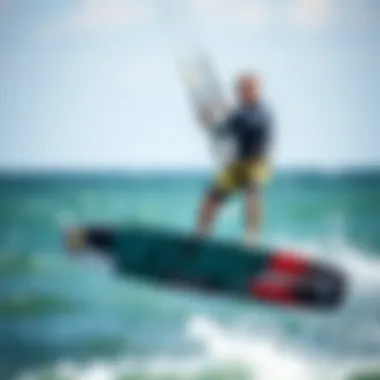
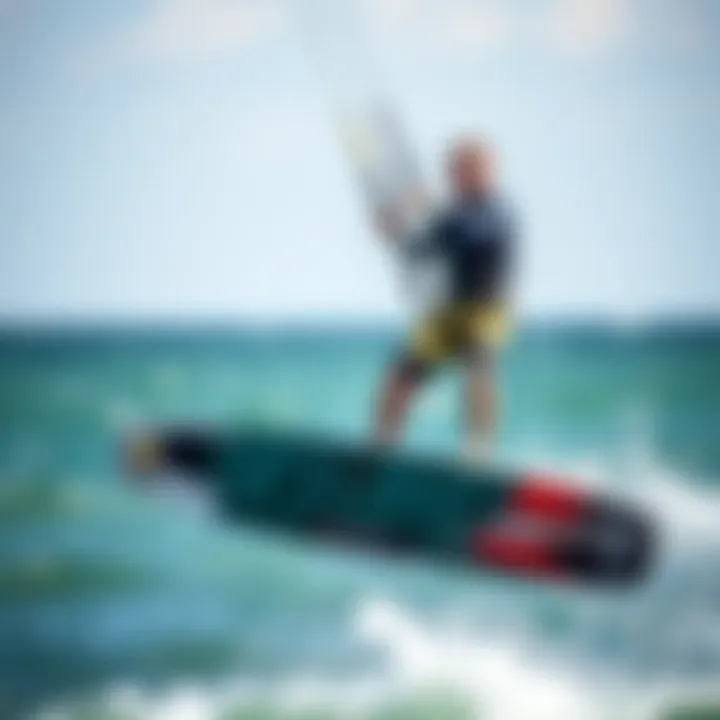
The foil is the component that truly separates hydrofoiling from traditional board sports. It’s all about how you slice through the water.
Types of Foils
Different types of foils cater to various riding styles and conditions. You have the choice between high-aspect and low-aspect foils, for instance. High-aspect foils are great for speed and efficiency, allowing riders to glide effortlessly over water. Low-aspect foils, on the other hand, are generally easier to control and provide more stability, making them well-suited for beginners.
Key Characteristics:
- Design Variations: Affects lift and speed capabilities.
- Intended Use: Determines how and where the foil is best utilized.
Foil Size and Shape
The size and shape of the foil also contribute to overall performance. Generally, larger foils offer more lift, which is helpful for beginners wanting to get started. However, as skill increases, some may want to switch to smaller foils that allow for higher speeds but require more technical control.
Advantages:
- Lift: Greater lift means easier starts but may feel unwieldy at high speeds.
- Responsiveness: Smaller foils can react quicker to rider movements.
Mounting Systems
Mounting systems are crucial for ensuring that the foil connects well with the board. A robust connection is vital for safety and performance.
Foil Attachment Mechanisms
The methods used to attach the foil to the board are varied, including plate mount systems and track systems. Plate mounts offer stability and ease of use, allowing for quick adjustments. Track systems, on the other hand, offer more flexibility but may require additional tools for adjustments.
Key Characteristics:
- Stability: Essential for consistent performance.
Adjustability Features
Adjustability in mounting systems can drastically affect how one rides. Being able to adjust the position of the foil can fine-tune balance and control. Some systems allow you to shift the foil forward or backward, affecting lift and responsiveness based on rider preference.
Unique Features:
- Adaptability: Ability to suit various riding styles and skill levels.
Safety Gear
When engaging in any water sport, safety gear cannot be overlooked. While fun is the primary goal, it is essential to protect oneself.
Necessary Safety Equipment
Safety equipment includes life jackets, helmets, and impact vests. A quality life jacket enhances buoyancy, making it easier to stay afloat in emergency situations. Helmets, though sometimes overlooked, can protect against head injuries during falls.
Key Characteristics:
- Material: Should be lightweight yet durable.
Protective Clothing Recommendations
For hydrofoiling, specific protective clothing is beneficial. Rash guards or wetsuits come in handy during colder months, preventing chafing and hypothermia. Also, padded shorts can provide additional comfort during falls or crashes.
Unique Features:
- Durability: Need for clothing to withstand tough conditions on the water.
Remember, while the thrill of hydrofoiling is evident, prioritizing safety can make the experience far more enjoyable.
Benefits of Hydrofoil Board Kits
Hydrofoil board kits offer a unique blend of advantages that significantly enhance any kiteboarding experience. They cater not just to seasoned riders but also open opportunities for novices eager to learn. Understanding the multifaceted benefits allows enthusiasts to appreciate these kits more fully and make informed decisions when choosing their gear.
Enhanced Speed and Performance
One of the standout features of hydrofoil board kits is their ability to amplify speed. When lifted above the water by the hydrofoil, the board encounters much less drag than a traditional board. This means you can achieve higher speeds with less effort, making the ride exhilarating. Factors contributing to this speed enhancement include the design of the foil and its material composition.
For example, carbon fiber foil setups tend to be lightweight and incredibly stiff, creating the necessary lift with minimal energy. In practical terms, riders can harness the power of wind more efficiently, allowing for longer runs and the thrill of rapid acceleration. Whether you’re racing against other kiteboarders or just enjoying the freedom of the open water, the increased performance is sure to elevate your ride.
Improved Maneuverability
Maneuverability is another key advantage offered by hydrofoil board kits. The unique design allows for sharp turns and quick directional changes that traditional boards might struggle with. The responsive nature of the foil helps riders navigate tight corners and tricky waves with ease.
Let’s think about a situation on the water: Imagine you’re carving through a set of waves. With a hydrofoil, you can effortlessly shift your weight to elevate above the surface, making those tight turns smoother and more controlled. This can be crucial when you are dodging unexpected obstacles or simply adapting to the ever-changing water conditions.
When efficiency and agility come together, hydrofoil kits enable riders to push the boundaries, trying and perfecting new tricks that may be challenging for standard boards. Here, the relationship between the rider and their gear reaches a new level of synergy.
Navigating Various Water Conditions
Water conditions can vary greatly from flat lakes to choppy seas, and here’s where hydrofoil board kits shine. The elevated position offered by hydrofoils allows riders to glide over choppy water, smoothing out the ride even in less-than-ideal conditions. This capability not only enhances enjoyment but also increases safety, as riders have a better chance of maintaining control.
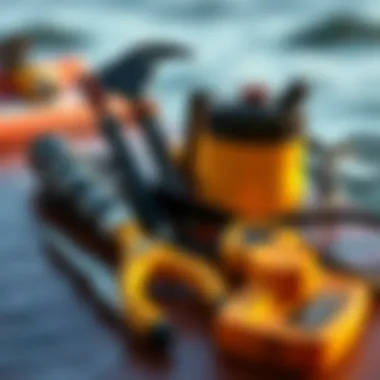
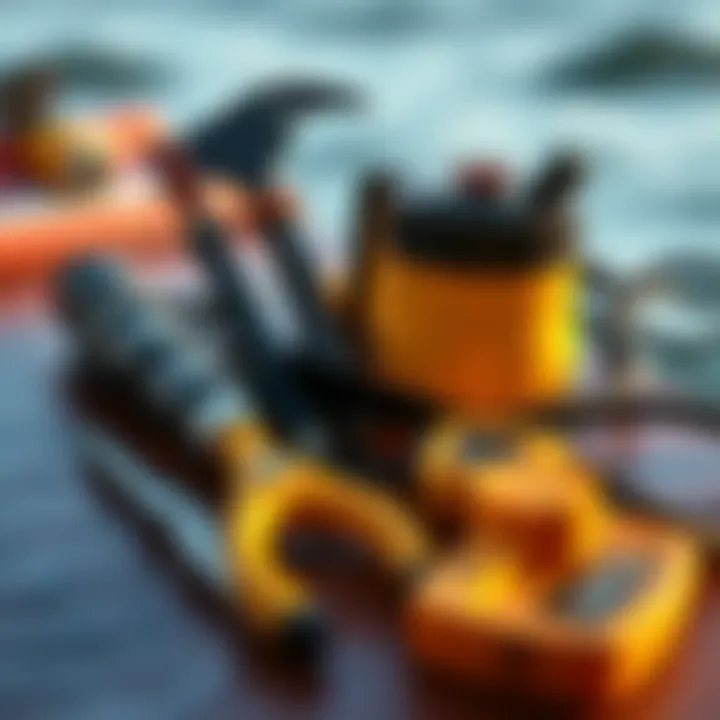
"It’s like flying over the waves rather than battling them!"
In terms of adaptability, hydrofoils excel in handling waves and light winds. You might find it exhilarating to take on surprisingly challenging environments, which can be discouraging with traditional boards. For instance, when the breeze isn’t strong enough to lift a kite, hydrofoils can still provide the lift needed for a fun ride, opening up new possibilities for kiteboarding locations and experiences.
Selecting the Right Hydrofoil Board Kit
Getting the right hydrofoil board kit isn’t just a matter of preference; it can significantly affect your riding experience. As the sport grows, so does the range of gear, catering to different skill levels, riding styles, and preferences. Selecting the right kit means you’ll maximize your performance and enjoyment on the water.
Key Factors to Consider
Skill Level Assessment
When it comes to skill level assessment, being aware of where you stand in your kiteboarding journey is crucial. Whether you’re a beginner, intermediate, or advanced rider, different hydrofoil kits suit various competencies.
For starters, beginners often benefit from more stable and forgiving designs. These kits typically feature wider boards and softer foils, which provide easier lift and better control. On the other hand, advanced riders look for higher performance gear with sharper designs and less stability that allow for more agility and speed.
A key characteristic is that kits designed for specific skill levels match the learning curve of the rider. For instance, a novice trying to handle an advanced setup may find themselves struggling, possibly leading to frustration or even injury. This makes assessing your skill level an essential factor in choosing the right kit.
One unique feature to consider here is that many brands now offer “beginner-friendly” options that incorporate instructional materials and guidelines, making the transition smoother. However, a disadvantage of this can also be over-complication, where trying to grasp the fundamentals becomes more challenging due to the various add-ons and features included.
Type of Kiteboarding Activities
The type of kiteboarding activity influences what kit will fit your needs best. Are you looking to cruise, race, or engage in freestyle moves? Each style demands different equipment characteristics.
If cruising is your game, then a larger foil and board will serve you well, keeping you gliding smoothly over the water, providing stability for longer rides. In contrast, for those attracted to racing, a more streamlined design enhances speed and responsiveness, making it an optimal pick.
A notable aspect of this factor is that it can significantly shape your experience. For example, a rider engaged in freestyle activities often prefers smaller, more maneuverable boards for performing tricks, whereas someone focused on distance or speed will favor setups designed for stability and glide.
These choices also come with advantages and disadvantages. Choose a setup that's too specialized for your style, and you may find yourself limited in your overall performance. It’s always a wise move to assess what activities you plan to indulge in before making your purchase.
Evaluating Brands and Models
Once you’ve determined your skill level and activity style, the next step involves evaluating brands and models in the hydrofoil market. This ensures you’re getting not only quality but also suitability for your unique needs.
Manufacturer Reputation
Reputation in the hydrofoil market carries significant weight. Well-established brands often invest in research and development, leading to innovations that boost performance and safety. Brands like Naish or Slingshot are known for their reliable products, ensuring what you’re getting is tried and true.
The manufacturer reputation is beneficial for your buying process, as it tends to reflect the quality control and customer satisfaction associated with their products. If a brand consistently receives positive feedback, it often means they stand behind their products, providing good customer service alongside warranties.
However, trusting brand reputation comes with the downside of potential high pricing for perceived quality. It’s always worth exploring lesser-known options that might offer comparable performance at a better price point.
User Reviews and Recommendations
User reviews provide invaluable insight, often shedding light on aspects of a product that manufacturers may overlook. Engaging with feedback on platforms like Reddit, or kiteboarding forums can furnish you with information about real-world performance, durability, and ease of use.
The main characteristic of user reviews is their authenticity — customers share their experiences honestly, highlighting both pros and cons. This open dialogue can give hints about common issues and successful features.
However, wading through endless reviews can also be overwhelming. The bias of personal experience often means you have to sift through the noise to find useful information. By focusing on detailed reviews rather than vague praise or condemnation, you can glean the most relevant insights.
Assembly and Maintenance of Hydrofoil Board Kits
Assembling and maintaining your hydrofoil board kit is crucial for ensuring optimal performance and longevity. A well-assembled kit not only enhances your riding experience but also minimizes the risk of mishaps on the water. Understanding and implementing proper maintenance practices can save you time and money in the long run, while also keeping your equipment in peak condition.
Assembling Your Kit
When it comes to putting your hydrofoil board kit together, approaching the task with care can make all the difference.
Step-by-step Assembly Instructions
Assembling your kit might seem daunting at first, but breaking it down into simple steps makes the process manageable. Generally, you'll want to start by sorting all components: the board, foil, and mounting hardware. Here’s a quick rundown of how to piece it together:
- Attach the Foil to the Board: Use the mounting hardware and ensure everything is lined up correctly. Tighten bolts steadily but don't overdo it.
- Check for Balance: Before hitting the water, ensure your board is balanced correctly by positioning the foil and adjusting as needed.
- Inspect Connections: After assembly, double-check all connections. Make sure everything is secure to avoid failures in the water.
This step-by-step process allows you to grasp the assembly mechanic thoroughly. Many riders appreciate this systematic approach because it spells out the complexities, turning them into straightforward tasks.
Common Challenges and Solutions
During the assembly of hydrofoil kits, certain issues may pop up. One common challenge is aligning foil mounts correctly to avoid dragging or instability while riding. It can be frustrating, but here’s a solution: use a level to ensure the setup is straight and balanced.
Additionally, fitting the screws can sometimes be tricky. If they don't seem to fit, inspect for any debris in holes and clean them out. An interesting feature of this setup process is how meticulous you must be; even a small misalignment can lead to significant issues once you hit the water.
Proper Maintenance Practices
Keeping your hydrofoil board kit well-maintained is just as important as the initial assembly. Regular care can enhance your riding experience and prolong your equipment’s life.
Regular Inspections
Conducting regular inspections is essential for spotting issues before they turn into larger problems. Riders should check for signs of wear, especially on the foil and board edges, along with any loose screws that might have come undone. Focus on the following aspects:
- Foil Condition: Look for any dents or bends which could affect your ride.
- Board Surfaces: Examine the material for cracks or chips that can worsen over time.
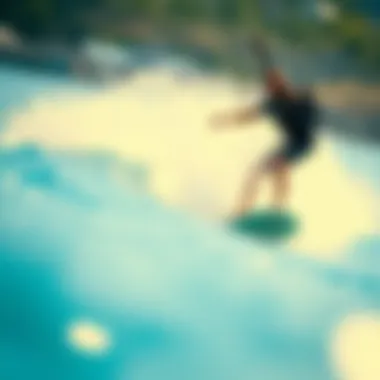
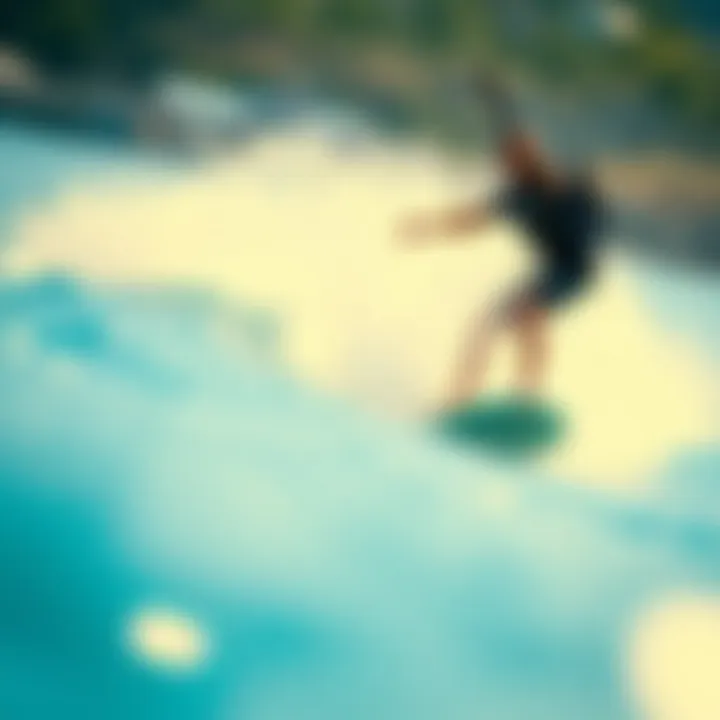
Regular inspections allow you to catch potential problems early. This preemptive approach could potentially save hefty repair costs and, more importantly, ensures your safety while riding.
Cleaning and Care Tips
Keeping your hydrofoil board clean is another vital aspect of maintenance. After a session on the water, rinse the board and foil with fresh water to remove salt and debris. A clean kit works better and lasts longer. Here are some key tips:
- Use Mild Soap: Occasionally, use a soft cloth with mild soap to wipe down surfaces. This keeps your gear looking good without being abrasive.
- Dry Thoroughly: Always dry your board and foil completely to prevent corrosion.
The unique aspect of these cleaning practices is that they not only maintain aesthetic appeal but they also significantly impact the functionality of your kit. A well-cared-for hydrofoil minimizes drag and enhances performance.
"Regular upkeep creates a sturdy bond between you and your watercraft—it’s as essential as learning to ride itself."
Fostering good assembly and maintenance habits will significantly affect your hydrofoiling journey. Whether you're just starting or are a seasoned pro, understanding these aspects makes a world of difference in both safety and performance.
Operational Techniques for Hydrofoil Riding
When it comes to hydrofoiling, mastering operational techniques is crucial for both enjoyment and safety. The art of riding on a hydrofoil board involves understanding how to balance, control speed, and utilize wind effectively. These techniques are not just mere skills; they form the foundation upon which you can elevate your riding experience, pushing the boundaries of what is possible on the water.
Getting Started: Basic Techniques
Balancing on the Board
Balancing on the board is the first step to successfully riding a hydrofoil. This can seem daunting at first, but it’s very much like learning to ride a bicycle—once you get it, it feels natural. Key to this is finding the sweet spot on your board, depending on your weight and the board design. Optimal balance helps maintain stability as you lift off the water.
One key characteristic of balancing on the board is your foot positioning. Many riders prefer to have their feet shoulder-width apart, aligned with the hydrofoil, which provides better control. This is often seen as a beneficial choice; it facilitates both stability and the quick adjustments needed while balancing on the moving water.
In terms of unique features, the design of the hydrofoil also impacts balancing. For instance, some boards come with concave shapes that can enhance grip and control. However, the disadvantage might be that if you are accustomed to a flat board, adapting to this may take some time. Either way, mastering balance is essential for transitioning from novice to expert and enjoying the ride to the fullest.
Controlling Speed and Direction
Controlling speed and direction are vital skills when hydrofoiling. Riders must learn how to manipulate the kite's angle, which directly impacts the board's speed. For novices, it might feel like trying to juggle with one hand, but as you refine this technique, it becomes more intuitive.
The key characteristic that defines control in hydrofoiling is how responsive your board is to changes in kite tension. By adjusting the angle and pull of the kite, riders can either gain momentum or slow down. This nuance makes controlling speed a popular choice among both learners and seasoned riders, as it offers limitless possibilities for performance.
One unique advantage in controlling speed lies in the hydrofoil's ability to glide smoothly over the water—much like a bird gliding through the air. However, the trade-off is that sudden speed increases can lead to increased challenges in maintaining stability. Understanding this balance allows riders to navigate more effectively and confidently, enhancing their overall skill set.
Advanced Riding Techniques
As riders become more comfortable, it’s time to explore advanced riding techniques that can take your hydrofoiling experience to the next level.
Performing Tricks
Performing tricks adds an element of thrill and excitement to hydrofoiling. Once you've perfected basic riding techniques, you can start incorporating jumps, spins, and flips into your repertoire. This can serve as both a self-fulfilling pursuit and a way to impress onlookers.
A key characteristic of performing tricks is the required timing and control over the kite. The achievement of a well-executed trick often hinges on the precise coordination of kite control. Many riders see this as a beneficial challenge—perfecting a new trick can be a rewarding endeavor. The unique aspect here is that tricks can vary significantly, depending on the rider's skill level and creativity. There’s always a new trick to learn, which adds to the sport’s enduring appeal.
However, some tricks may bring about a higher risk of falls or injuries, marking this as a potential disadvantage. Staying mindful of safety and taking it slow when learning new tricks is essential.
Navigating Wind Currents
Navigating wind currents is an advanced technique that can significantly increase your enjoyment and performance. Understanding wind patterns and how they affect your hydrofoil riding can make a world of difference. As most experienced riders will tell you, being at the mercy of the wind is a story for the unprepared.
The key characteristic of this technique lies in recognizing and utilizing wind currents effectively. Riders who can read the wind and adjust their riding strategy accordingly often find this to be a beneficial skill. This allows for more efficient travel and better performance overall.
One unique feature of navigating wind currents is that it can lead to different riding experiences. For example, catching an updraft can propel you higher and faster, while down drafts can be more challenging and require immediate adjustments. The disadvantage here may be the steep learning curve; interpreting wind behavior can take time, but it rewards persistence with enhanced riding abilities and enjoyment.
Safety Considerations
Hydrofoil boarding, while exhilarating, is not without its risks. Understanding safety considerations is crucial for every aspiring hydrofoiler. Prioritizing safety helps minimize injury and ensures a more enjoyable experience on the water. For both novice and seasoned riders, making informed choices regarding safety gear, practices, and procedures is of utmost importance.
Understanding Risks and Hazards
When venturing into the world of hydrofoiling, one ought to be aware of various risks and hazards that might arise. These can range from environmental factors to equipment malfunctions. Here’s a breakdown:
- Water Conditions: Variability in water conditions, such as changing tides, currents, and wind speeds, can significantly affect performance and safety. Familiarity with local conditions can prevent mishaps.
- Collisions: Hydrofoiling often takes place in crowded areas. The potential for collision with other boards, boats, or obstacles is a real threat.
- Foil Design Flaws: Malfunctioning equipment can lead to serious accidents. Regularly inspect your hydrofoil for signs of damage or wear.
- Inexperience: Lack of understanding and skill can lead to dangerous situations. Always recognize personal limitations and ride within those bounds.
Ending
In wrapping up our exploration of hydrofoil board kits, it’s pertinent to reflect on the significance of each component and technique discussed throughout this article. These kits, combining innovation and excitement, are not just toys for the water; they are essential pieces of equipment that unlock a unique experience for kiteboarders.
The importance of a solid understanding of hydrofoil board kits cannot be overstated. Choosing the right components—from the board and the foil to the safety gear—is crucial. Each choice directly impacts the rider’s performance on the water and can mean the difference between a thrilling ride or a frustrating day out. Having crisp technical knowledge arms riders with the tools to make informed decisions. This helps in avoiding common pitfalls that could lead to an unsatisfactory surfing experience or even potential accidents.
Recap of Key Points
A thorough understanding of hydrofoil board kits reveals several key elements:
- Components: The individual parts of the hydrofoil board, including the board itself, the foil, the mounting systems, and necessary safety gear.
- Benefits: Enhanced speed, maneuverability, and adaptability to different water conditions.
- Selecting the Right Kit: Factors to consider include personal skill level and brand evaluations based on reputation and user experiences.
- Assembly and Maintenance: Importance of proper assembly and maintenance practices to ensure longevity and performance reliability.
- Operational Techniques: Fundamental and advanced techniques enhance riding skills for both novices and seasoned kiteboarders.
- Safety Considerations: Knowledge of risks, potential hazards, and emergency protocols plays a significant role in ensuring a safe riding experience.
Encouraging Safe and Responsible Hydrofoiling
Equipped with knowledge, kiteboarders should prioritize safety and responsibility when engaging in hydrofoiling. Adhering to safety guidelines is not just advisable, it’s essential for anyone venturing into this exhilarating sport. Whether it's wearing appropriate protective gear or understanding the local water conditions, safety cannot be compromised.
Regular check-ups of the equipment before hitting the water can prevent accidents. Additionally, being mindful and respectful of fellow water users helps in maintaining a healthy and safe environment.
Hydrofoiling can be one of the most rewarding ways to experience water sports, but it comes with the responsibility that every rider must embrace. For resources on safety guidelines, consider checking the U.S. Coast Guard’s Boating Safety Division, or community forums on reddit where experienced kiteboarders share tips and best practices.
In the grand scheme of hydrofoil riding, knowledge and practice foster enjoyment and mastery. Let every kiteboarding outing be a testament to preparation, safety, and sheer joy on the waves.















